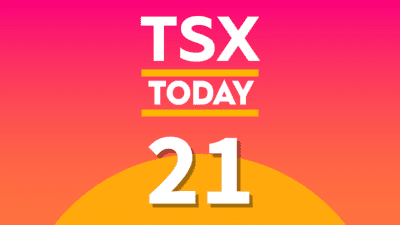While most readers of this site will likely be heavily invested in individual stocks, I suspect many also use index or exchange-traded funds to some degree, at least for exposure outside North America. On the other hand, newly converted indexers are often tempted to dabble on the side with individual stocks, although I also know “purists” who insist that indexing should be an all-or-nothing proposition.
“Core & Explore”
About a year ago, Preet Banerjee – author of Stop Overthinking Your Money – wrote an interesting piece in MoneySense magazine about so-called Core & Explore. The piece seemed to resonate with many readers, suggesting the vast majority of knowledgeable do-it-yourself investors indulge in some sort of hybrid strategy.
Certainly my own portfolio uses both approaches, which is why when I was asked about disclosure for this site, I replied that I’m indexed enough that I own at least a tiny piece of every stock on the planet but that I also own perhaps 50 individual stocks for which I have “high conviction.” Examples would be the big Canadian banks, the major telcos and cable players (BCE, Rogers, Telus), the major U.S. tech companies like Apple, Microsoft, Google and the like, plus a smattering of ADRs (Royal Dutch Shell, Toyota). All of these except Google pay dividends.
Is there “alpha”?
Whether such a strategy actually results in better returns is, however, in doubt. The indexing purists will certainly scoff at the compromises inherent in Core & Explore. The author Dan Solin, for example, is a committed indexer and has publicly lambasted stock-picking TV personalities like Jim Cramer.
Personally, I listen to Cramer’s MadMoney the next day via podcast, as I do with Motley Fool podcasts (Motley Fool Money, Market Foolery, and Where the Money Is). That doesn’t mean I run out and buy the stocks discussed on such shows, but I may act in my own way on a trend discussed.
For example, Cramer often talks about his four horsemen of the apocalypse biotechnology stocks: Celgene, Giliad, Regeneron, and Biogen Idec. I consider these too risky for my taste as individual stocks but I liked the theme, so instead bought a biotech ETF (Market Vectors Biotech ETF (NYSE: BBH)) that owned large chunks of the four stocks, as well as a score of smaller issues in the space. It’s up at least 50% since I bought it.
Similarly, other stock-picking themes can as easily be implemented with ETFs: social/mobile/cloud through PowerShares NASDAQ Internet Portfolio ETF (NASDAQ: PNQI), for example, or the trend to healthier eating. Disclosure: I own both BBH and PNQI, although I lightened up on the latter this summer to make room for a bit of Alibaba.
Owning an index without owning an index-tracking fund?
Norm Rothery, publisher of The Stingy Investor newsletter, is a value-oriented stock-picker who once told me that discount brokerages change everything. He gave the example of the 30 component stocks of the Dow Jones Industrial Average, pointing out you could own all 30 for $300, assuming $10 per trade. Yes, you could also buy the SPDR Dow Jones Industrial Average ETF (NYSE: DIA) and accomplish the same thing with one $10 trade: on the other hand, if you bought and held the 30 components for the proverbial long run, you’d not have to pay the admittedly tiny (0.17%) Management Expense Ratio on the ETF. You’d also likely get annual reports in the mail, which helps understand the stocks better.
Of course, the temptation in this example would be to start overweighting the high-conviction picks and underweighting names you regard as inferior in some way. Indexing purists like Andrew Hallam, author of Millionaire Teacher, would no doubt declare “that way lies madness.” His book colorfully recounts his own personal journey from stock-picking to pure indexing.
The Foolish bottom line
Those of us in the hybrid camp – and I suspect our numbers are legion – should stick to our areas of competence and use ETFs to round out any pockets of relative ignorance.
Personally, I feel comfortable with large-cap Canadian and some U.S. companies but rarely attempt to pick individual small-cap or mid-cap names. Better to use a basket approach with the latter, in my view.
The same goes for investing outside North America. I feel comfortable buying country ETFs (primarily iShares products) for major economies like Germany or Switzerland but only rarely would I single out individual ADRs for exposure to international mega-cap stocks.
So what do you think, fellow investors? Is a hybrid strategy foolish or capital-F Foolish? Drop me a line at [email protected].







